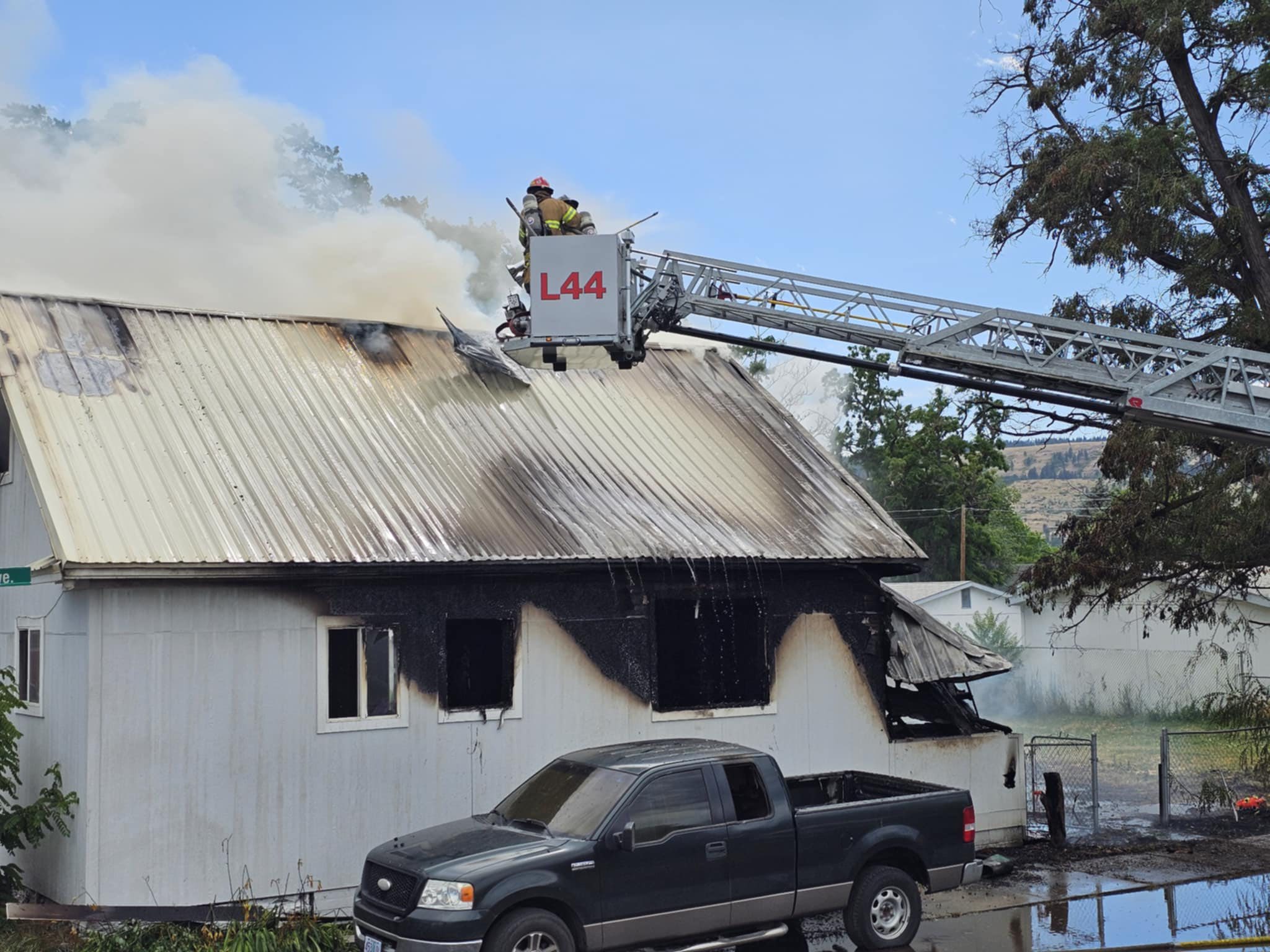Oregon ranchers test nonlethal wolf deterrents
Published 7:00 pm Sunday, April 30, 2023

- One of Kim Kerns' livestock guardian dogs stands near her sheep.
ENTERPRISE — With support from a federal grant, ranchers across Oregon are testing nonlethal tools to protect livestock from wolves.
The deterrents ranchers are experimenting with fall into three categories: an old-school technique called fladry, carcass management and new high-tech tools.
Ranchers who have lost livestock to wolves say they are desperate for effective solutions.
“Last year was just hell,” said Tom Birkmaier, a fourth generation rancher in Wallowa County who lost 20 head of cattle — seven of which were confirmed as wolf depredations.
In July, USDA’s Natural Resources Conservation Service awarded a $100,000 grant to the nonprofit Western Landowners Alliance to explore nonlethal wolf deterrents.
Grant recipients must donate their time, services, equipment or other resources. If they meet their commitment, they receive a 75% matching grant. For example, if a community spent $10,000, it would get an additional $7,500 to spend on nonlethal wolf deterrents. This spring, ranchers, wolf committees and communities are partnering with Western Landowners Alliance to test the tools.
Fladry
The first deterrent the ranchers are testing is an ancient tool called fladry: strips of red fabric hung on fences. Wolves are neophobic, meaning they have a fear of unfamiliar objects such as fabric flapping in the wind.
Some ranchers say fladry is useful for about 60 days — until the wolves acclimate to it — around pens of calves or yearlings.
“There are some folks who feel it’s BS. Others feel it has been a great tool for them,” said Ellie Gage, who is administering the grant.
Gage is also chair of the Crook County Wolf Committee. She ranches near Powell Butte with her husband.
Getting rid of carcasses
The second technique ranchers plan to test is carcass management.
Wolves are scavengers, said Gage, attracted by dead animal carcasses and bones. The concept behind this project is to remove carcasses from rangeland and compost them, leaving fewer attractants on the landscape.
The project is modeled after a successful carcass composting project in Montana run by the Big Hold Watershed Committee.
Baker County and Prairie City, in Eastern Oregon, plan to try carcass removal programs this year with support from local wolf committees and the grant.
For the Baker County project, the plan is to construct a compost site for carcasses by September. Baker Sanitary Service tentatively plans to assist ranchers in removing carcasses and picking them up from drop sites.
“Anything we can do nonlethal to prevent (wolf depredation) is important. Removing carcasses as bait is a start,” said Christina Witham, Baker County commissioner and member of the county’s wolf committee.
High-tech tools
The third category of deterrents ranchers are experimenting with are high-tech tools.
In April, Todd Nash, president of the Oregon Cattlemen’s Association, put high-frequency collars on his cattle to be able to more quickly locate them in threatening situations.
Another tool ranchers are trying are Foxlights, which spin, strobe, splash and pulse light in randomized colors and patterns to drive wolves away.
“I don’t know yet if they’ve helped for not. Jury’s still out on whether we’ve had any less predation,” said Kim Kerns, a fourth-generation rancher in Keating with sheep and cattle.
Kerns also recently put a satellite tracking collar on one of her guard dogs. She hopes this will allow her to find the dog quickly in times of crisis.
Another piece of technology Alliance members will test is a new game camera that is being developed with artificial intelligence that can be programmed to identify specific animals and notify producers.
Outside the grant, ranchers are also experimenting with sound machines, penning livestock in electro-net fencing at night and creating “bio-fences” with scat from other wolves to establish territoriality.
Throughout the year, ranchers will be tracking the effectiveness of each tool.
If the project can show which tools are most effective in different regions, Gage said it could lead to more permanent funding to assist ranchers.
To participate in future trials of non-lethal wolf deterrents, contact Ellie Gage at ellie@westernlandowners.org.
Ravens are major nest predators for sage grouse, meaning they eat sage grouse eggs, according to Morgan Solomon, Baker County sage grouse local implementation team coordinator.
Like wolves, ravens are scavengers drawn to carcasses. Solomon said if people remove carcasses from landscapes where sage grouse nest, ravens may be more likely to pass quickly through those areas rather than settle down and eat sage grouse eggs.
“I think it’s a great project,” said Solomon. “It has a lot of stakeholder buy-in from different avenues.”









